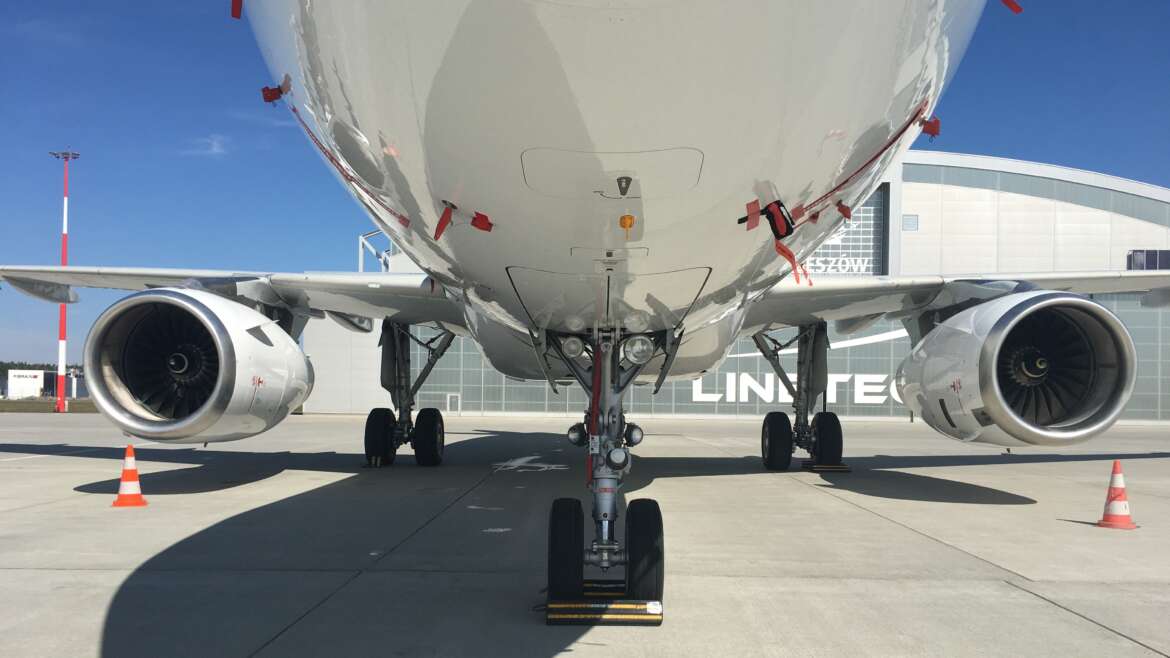Aircraft safety stands as a paramount concern within the aviation industry. Pylons, as integral components of aircraft structure, play a critical role in maintaining this safety standard. Serving as the secure mountings for engines to the airframe, pylons facilitate the transmission of engine thrust and support essential systems such as electrical wiring, hydraulic and fuel lines up to the engine and all return lines. This is why the structural integrity of pylons is fundamental to the overall stability, performance, and safety of an aircraft.
This article delves into the meticulous process of repairing pylon corrosion on the Airbus A320F, shedding light on the challenges, analyses, and collaborative efforts involved in safeguarding these essential structures. Let’s explore the intricate world of pylon corrosion repair, guided by insights from Tariq Albraikat, Head of Engineering and Workshops at Linetech MRO, a leading Maintenance, Repair, and Overhaul facility within the Avia Prime Group.
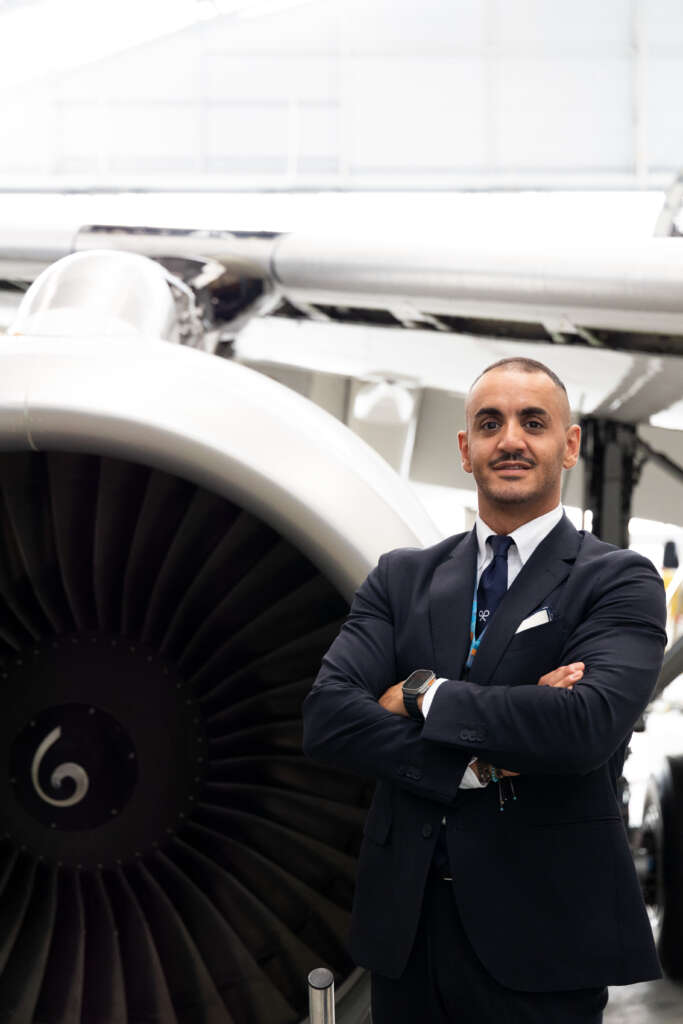
Airbus A320F – pylon corrosion occurrence
Pylons, the backbone of engine support, face corrosion challenges primarily on the upper and lower Spars of the engine pylons. The pylon corrosion repair process of Airbus A320F has been initiated in response to the numerous reports from the operator regarding the elevated occurrence of corrosion detected on the upper, lower FWD and/ or AFT spars of CFM56 engine pylons.
“For pylons, corrosion is typically located on the upper and/or lower FWD and/or AFT spars. The spar represents the most exposed section on the upper side of the pylon. Once corrosion is identified, the sole method for its removal is through blending out the affected surface” – says Tariq Albraikat.
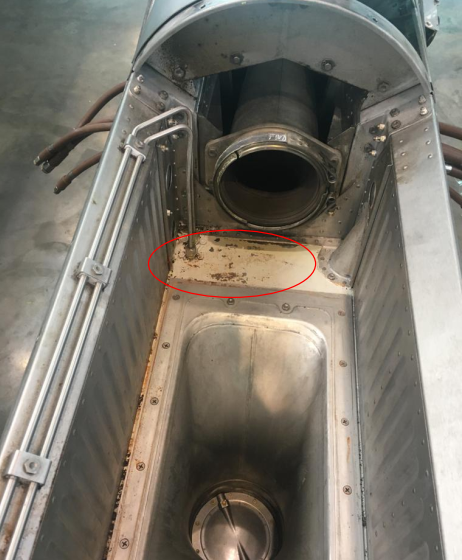
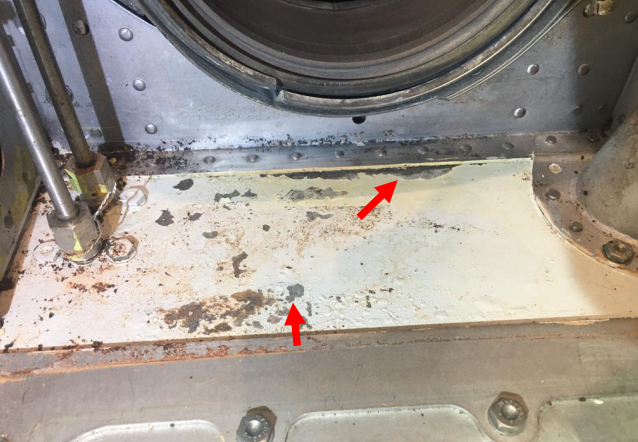
In search for cause – Laboratory analysis
Before initiating the pylon corrosion repair procedure, several analyses and assessments are typically conducted to ensure effective planning and execution. The laboratory analysis has revealed that the chemical composition of the black residues closely resembles that of de-icing fluid AMS1428. Further testing has indicated that de-icing fluid AMS1428 has the potential to deteriorate the protective system of the spars. The degree of this deterioration is contingent on both temperature levels and concentration of the de-icing fluid. The MRB inspection tasks are regarded as crucial in identifying corrosion issues in their initial stages and mitigating the need for extensive repairs.
“Laboratory analysis has linked the corrosion to de-icing fluid AMS1428, whose interaction with the pylon spars deteriorates their protective system. Timely detection through MRB inspection tasks is crucial to mitigating extensive repair needs” – states the Head of Engineering and Workshops at Linetech.
Challenges in pylon corrosion repair
Due to difficult location of corrosion and the presence of other assorted items, performing the repair on the wing is highly demanding, yet feasible. As Tariq Albraikatdescribed, the whole process roughly takes about 6-8 weeks overall. The whole process of repair is complex and demanding due to resource constraints, limited access, and the need to utilize high-speed tools in tight spaces, making performing works on these areas challenging. The manufacturer recommends dismounting the pylons from the structure to perform the repair.

Step-by-step process of pylon corrosion repair
The procedure of pylon corrosion repair involves a meticulous sequence of steps to ensure safety, structural integrity, and operational excellence.
Pylon corrosion repair requires the following steps:
- Engine Removal.
- Nacelles removal (fan cowl, reversers)
- Hydraulic lines, pipes, wires removal/ displacement/ disconnection
- Pylon removal
- Cantilever (FWD secondary structure) removal
- Corrosion Removal
- NDT inspection (HFEC, MRT, Roto Test)
- Cadmium plating
- Cantilever installation
- Pylon installation along with Hydraulic lines, pipes, wires installation
- Engine and nacelles installation
Tariq Albraikat underscores the crucial role of consulting with the OEM (Original Equipment Manufacturer) during the pylon repair process, highlighting the importance of this collaborative approach for ensuring the integrity and safety of the repair work:
“Once corrosion is detected, we approach the OEM with our structural proposal for repair and once we obtain the approval from Airbus, we can start the repair and corrosion can be repaired.”
Alignment geometric tool – specialised equipment for pylon repair
An essential part of any MRO repair is to provide the required tools to perform the service. In addition to the tools for engines, nacelles and pylon removal/installation, there is required a tool for cantilever (FWD secondary structure) removal/ installation which is called the alignment geometric tool.
As Tariq Albraikat ensures: “At Linetech we make 100% sure that everything we do is according to quality standards and OEM guidelines. The use of alignment geometric tool is mandatory to ensure the correct location of fan fittings after re-installation of the cantilever”.
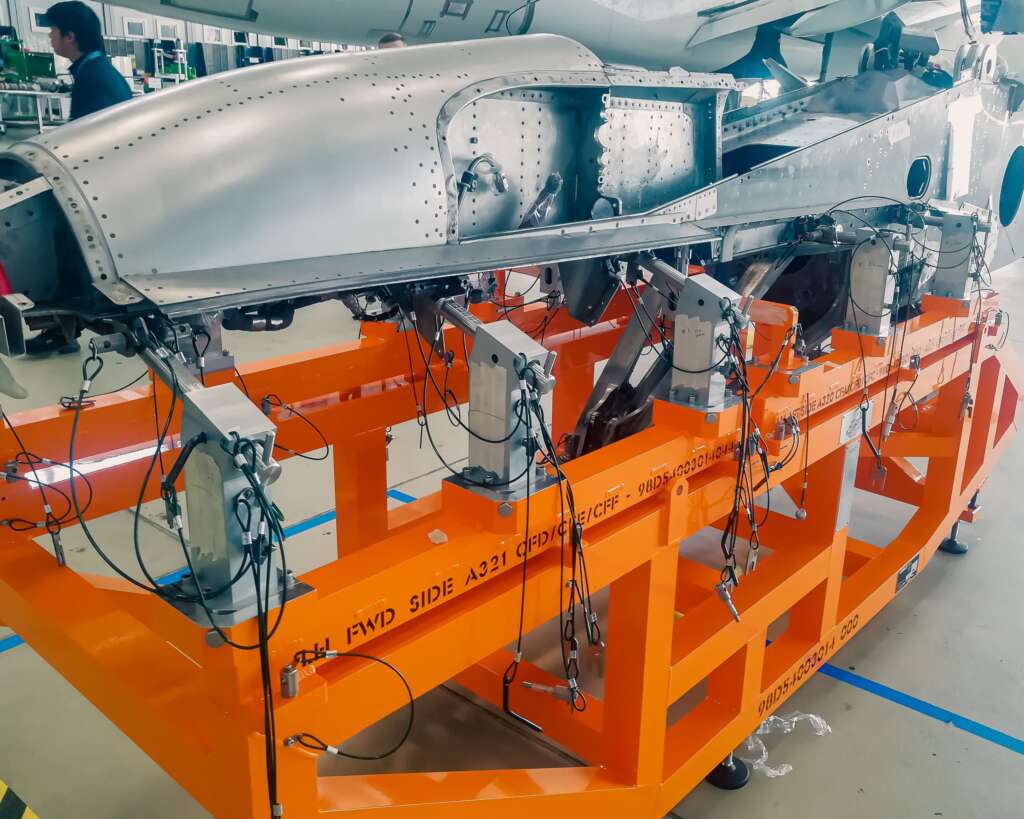
“And what makes the cantilever necessary for this kind of operation? If we remove the fan cowl and install it without the alignment tool, the location of those fittings may be changed and if it does, the fan cowl will not set properly and might open during flight leading to a catastrophic damage”. Linetech’s Head of Engineering continues: “That’s why Airbus has manufactured this tool. Thanks to it, since the gaps varies from A/C to another, therefore on each aircraft, pylons shall be fixed on the alignment geometric tool so gaps can be taken before the removal of the secondary cantilever structure and after the repair completion, installation shall take place in reference to the gaps that were taken during the removal”.
For how long does the repairment procedure protect the pylons against further corrosion?
“Based on our experience on A320F Pylon corrosion, most of the pylon corrosion repairs are covered by CAT A RDAF which means the repair is permanent without any further inspections, in other words, corrosion will not propagate on pylons within the design service goal of the aircraft (DSG)” –explains Linetech’s Head of Engineering.

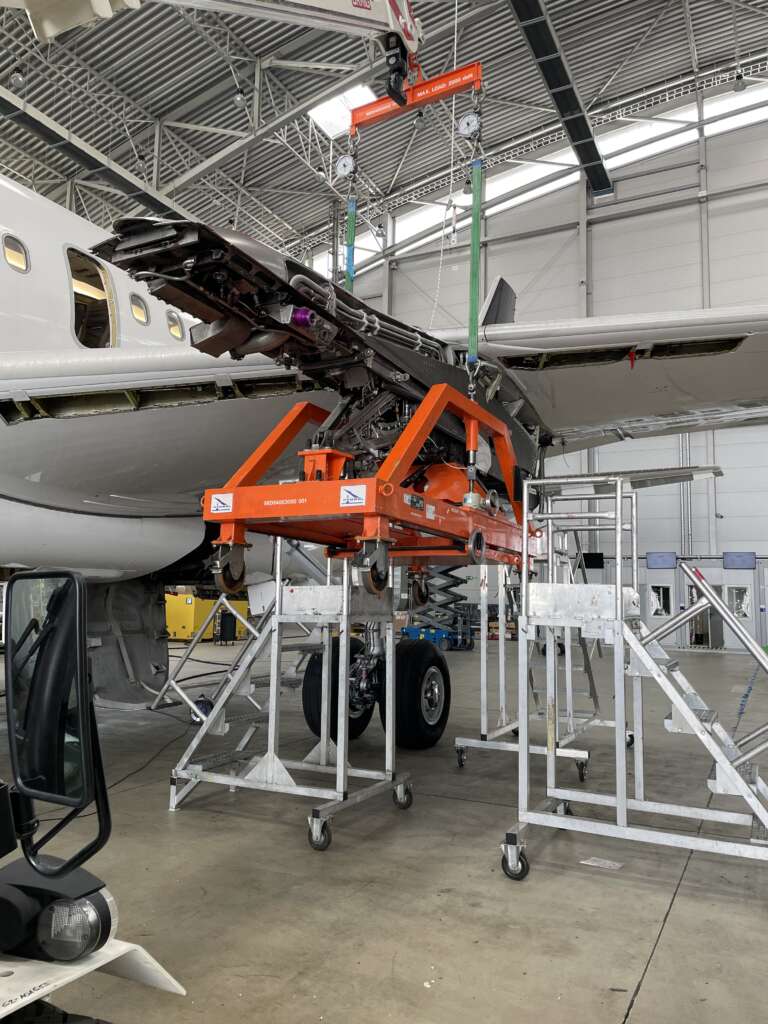
Linetech, part of Avia Prime Group, is a leading MRO (Maintenance, Repair, and Overhaul) facility situated in Europe. With strategically located hangars in Rzeszów and Katowice, Poland, Linetech offers up to 10 slots for heavy maintenance of aircrafts, including Airbus A320F CEO and NEO, Boeing 737 CL/NG as well as EMBRAER 170/190. In addition to comprehensive heavy maintenance services, Linetech also specializes in efficient line maintenance. As part of the Avia Prime Group, Linetech stands as one of the fastest-growing MRO providers in this dynamic region of Europe, dedicated to ensuring the safety and reliability of commercial aircraft.

